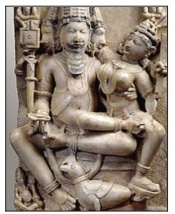Rani ki Vav
This is a collection of articles archived for the excellence of their content. |
2015: Missing idols
The Times of India Dec 21 2015
Sivakumar B
Next time you visit Gujarat, you must visit Rani kiVav, an excellent symbol of our great art and culture,“ tweeted PM Narendra Modi in 2014 soon after Rani kiVav received the Unesco heritage tag. The Rani kiVav or Queen's Stepwell is in Patan district of Gujarat, very close to Vadnagar where Modi was born. It is from this heritage site that two stone statutes were stolen in 2001 one a Brahma Brahmini and the other a Ganesh. While the Ganesh statue belongs to 11th century , the Brahma statue belongs to 12th century . Though FIRs were filed recording the theft the case hasn't made much headway .Neither the Archaeological Survey of India (ASI) nor the Central government has pursued it vigorously, says KiritMankodi, a professional archaeologist based in Mumbai.While there is no news of what happened to the Ganesh statue, the Brahma statue was apparently with an antique dealer named Jeremy Knowles in London until recently . Mankodi wrote a book on RankiVav in 2012 in which he mentioned the two missing stone statues. This created a wave of interest in the site and enthusiasts started to come up with information on these statues, he says. “More people who are interested in getting back our statues from foreign countries started to send details. One such was a print advertisement given by Knowles to sell the Brahma statue,“Kirit told TOI. “Recently , a team of ASI officials visited London to check on the originality of the Brahma statue. But the team came back stating that the statue is not original and the issue stands at that,“ joint directorgeneral R S Fonia told TOI. Europe is a big market for illicit antiquities. The markets of London, Paris, Brussels and Zurich are regularly peddling Indian art despite the blanket ban on export of cultural property , said Singapore-based S Vijay Kumar who heads an online initiative to combat idol smuggling

